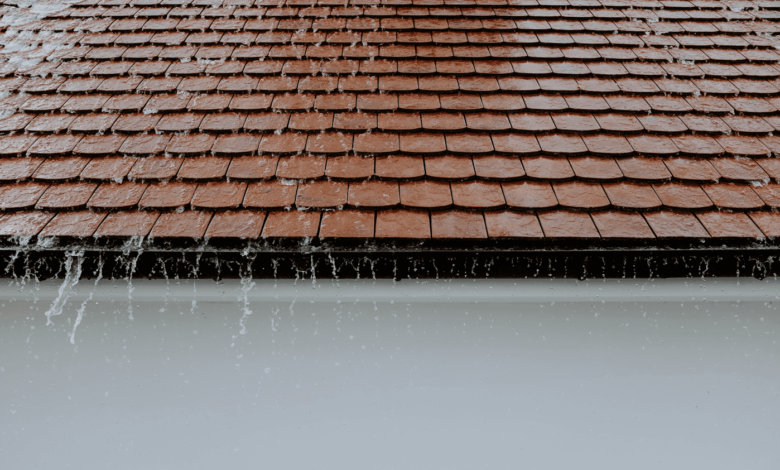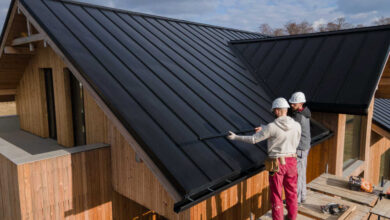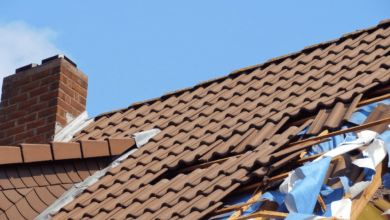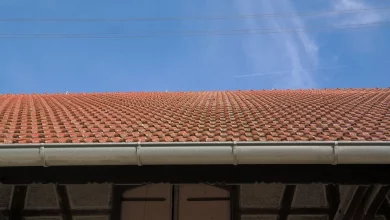The Ultimate Showdown: How Various Roofing Materials Perform in Rainy Weather

Rainy weather can be a blessing or a curse, depending on the state of your roof. For homeowners, choosing the right roofing material is crucial to ensure long-term durability, aesthetics, and peace of mind.
This blog post aims to help you understand how different roofing materials—specifically asphalt shingles, metal, slate, and wood shakes—perform during rainy weather. By the end of this guide, you’ll be better equipped to make an informed decision for your home’s roofing needs.
Asphalt Shingles: The Popular Choice
Overview of Asphalt Shingles
Asphalt shingles are a popular roofing material in the United States. They are known for their ease of installation, affordability, and versatility. How do they fare in rainy weather?
Durability in Rainy Conditions
With rainy weather, asphalt shingles offer decent performance. They are designed to repel water effectively, reducing the risk of leaks. Their performance can degrade over time, especially if they are not properly maintained. The granules on the surface of asphalt shingles can wear off, making them less effective at repelling water.
Maintenance Tips for Longevity
To maximize the lifespan of asphalt shingles, regular maintenance is key. Clear any debris that accumulates on the roof, as this can trap moisture and lead to mold growth. Check for missing or damaged shingles and replace them promptly to prevent water infiltration.
Metal Roofing: Sturdy and Resilient
Overview of Metal Roofing
Metal roofing has gained popularity for its durability and sleek appearance. Made from materials like steel, aluminum, and copper, metal roofs are built to last and offer excellent performance in various weather conditions.
Excellent Water Resistance
One of the standout features of metal roofing is its exceptional water resistance. Metal panels are designed to channel water off the roof quickly, minimizing the risk of leaks. Additionally, metal roofing is less prone to water damage compared to other materials, making it an excellent choice for rainy climates.
Minimal Maintenance Required
Metal roofs require minimal maintenance, which is a significant advantage for homeowners. Regular inspections are recommended to check for any potential issues, such as loose screws or minor rust spots. Keeping the roof clean and free from debris will further enhance its longevity.
Slate Roofing: The Timeless Classic
Overview of Slate Roofing
Slate roofing is renowned for its timeless beauty and remarkable durability. Often considered a premium roofing material, slate shingles are made from natural stone and offer a unique aesthetic appeal. But how do they hold up in rainy weather?
Superior Durability and Water Resistance
Slate roofing excels in rainy conditions due to its natural water resistance. The dense composition of slate prevents water from penetrating the surface, ensuring your home remains dry even during heavy downpours. Additionally, slate is highly durable and can last for several decades with proper care.
Important Considerations
While slate roofing is incredibly durable, it is also heavy. Ensure that your home’s structure can support the weight of a slate roof before installation. Regular inspections and maintenance are essential to address any issues promptly, such as cracked or broken shingles.
Wood Shake Roofing: Rustic Charm With Challenges
Overview of Wood Shake Roofing
Wood shake roofing offers a rustic and charming appearance that appeals to many homeowners. Made from natural wood, typically cedar, wood shakes provide a unique and earthy aesthetic. Their performance in rainy weather requires careful consideration.
Vulnerability to Water Damage
Wood shakes are more vulnerable to water damage compared to other roofing materials. Prolonged exposure to moisture can lead to issues such as rot, mold, and warping. To mitigate these risks, treat wood shakes with water-resistant coatings and regularly maintain your roof.
Maintenance for Optimal Performance
Proper maintenance is crucial to ensure the longevity of wood shake roofing. Regularly inspect the roof for signs of damage, such as cracks or splits, and replace any compromised shakes promptly. Applying water-repellent treatments can help protect the wood and enhance its resistance to moisture.
Selecting the right roofing material is a crucial decision for homeowners, especially in regions with rainy weather. Each material—whether it’s asphalt shingles, metal, slate, or wood shakes—has its unique advantages and considerations.
By understanding their performance in rainy conditions, maintenance requirements, and long-term benefits, you can make an informed choice that suits your needs and preferences. If you’re ready to explore your options further, consult with a roofing professional like Precision Exteriors to determine the best fit for your home. Make the right choice to enjoy a durable, beautiful roof that stands the test of time.




